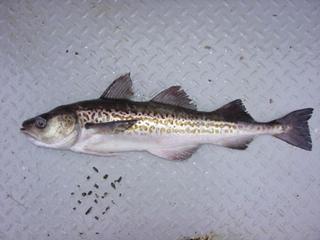As Biomass Booms, Pollock B Season Wraps Early

Thursday, October 02 2014
In the Bering Sea, it’s normal for pollock fishing to continue all the way up to Halloween. That’s what Krista Milani has seen in her time tracking the harvest for the National Marine Fisheries Service in Unalaska.
"I looked back several years, and that tends to be how it usually goes," Milani says.
But this season, the trawl fleet wrapped up a full month early thanks to an abundance of mature pollock.
Jim Ianelli is a biologist for the Alaska Fisheries Science Center. This summer, they used trawl nets and acoustic transducers to estimate the biomass of pollock in the Bering Sea.
"And just for the bottom layer of pollock, it was 7.4 million tons," Ianelli says.
That’s the second-largest biomass on record since scientists kicked off the survey in 1982.
The fish that live on the bottom layer of the Bering Sea tend to be slightly older -- around six years old. Ianelli calls them "fish that are going to be a really good size for catching."
"They have a good amount of flesh on their bones," he says. "The other thing that’s nice is that they’ve also had several opportunities to spawn."
That was apparent based on the large number of young pollock in the water this summer. Ianelli says it's a sign of good things to come -- but it won't necessarily lead to a bigger catch limit.
That's because the biologists and industry leaders who sit on the federal North Pacific Fishery Management Council are limited in how much groundfish they can put up for harvest in the Bering Sea.
It has to stay below 2 million metric tons. While pollock gets the biggest share, it maxes out around 1.5 million metric tons.
The council will decide on a catch limit at their December meeting.



